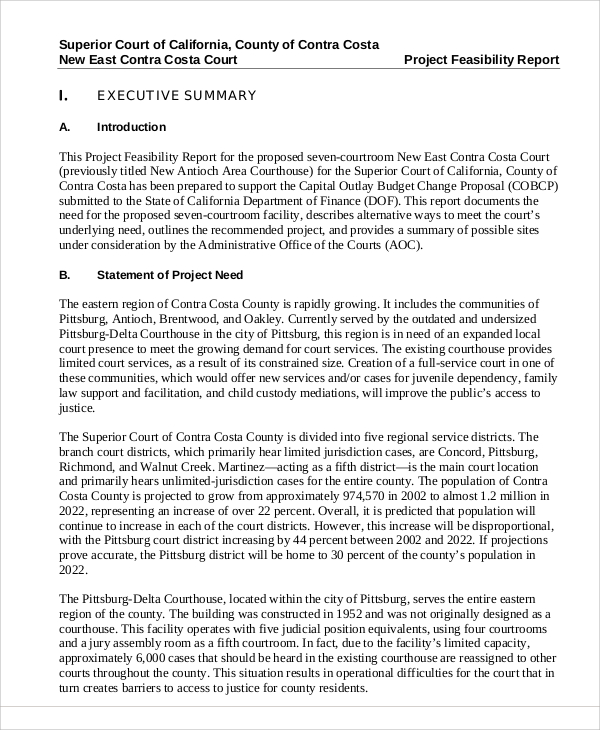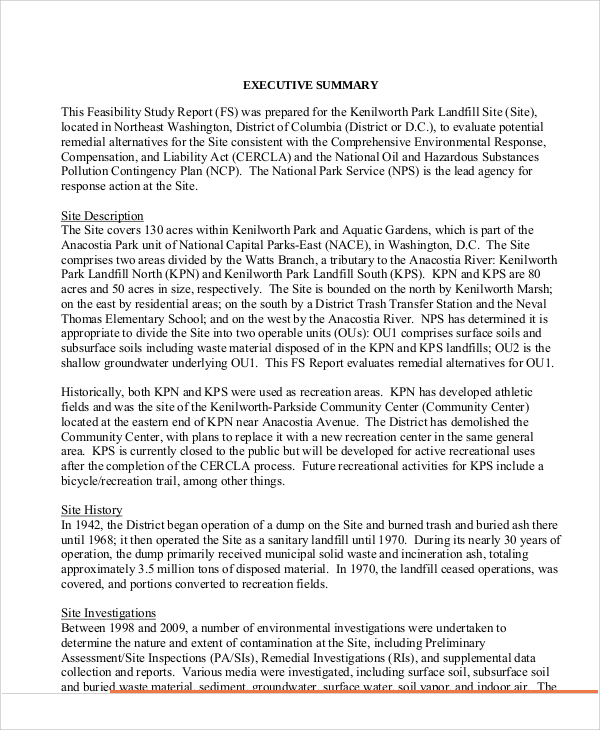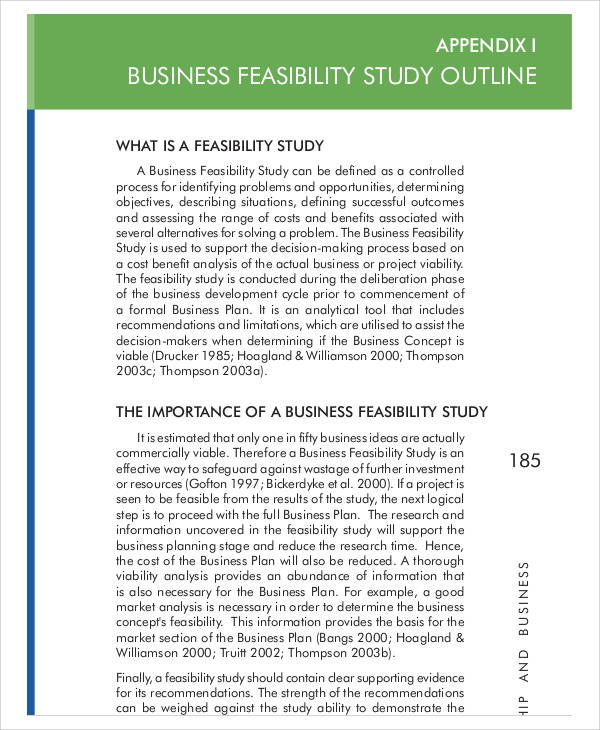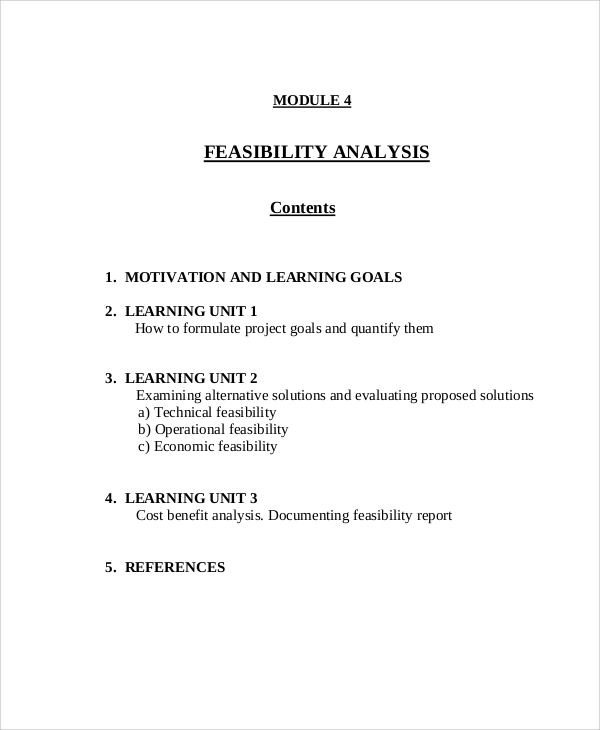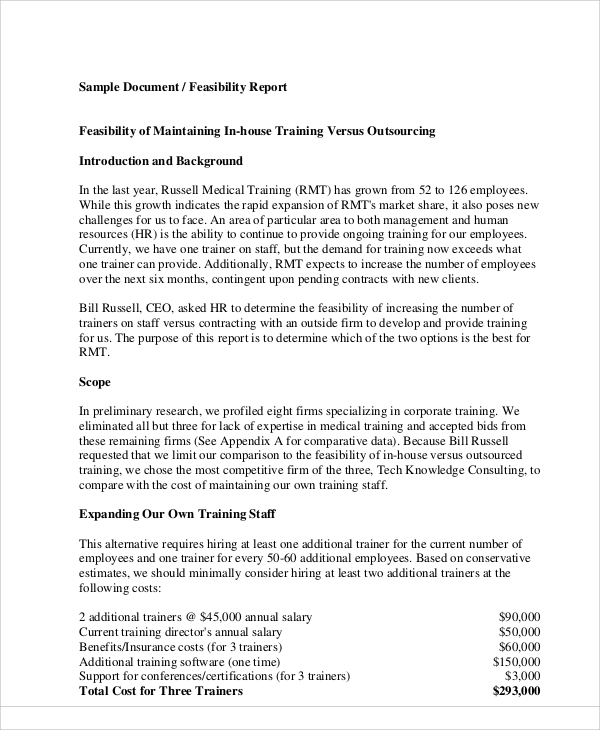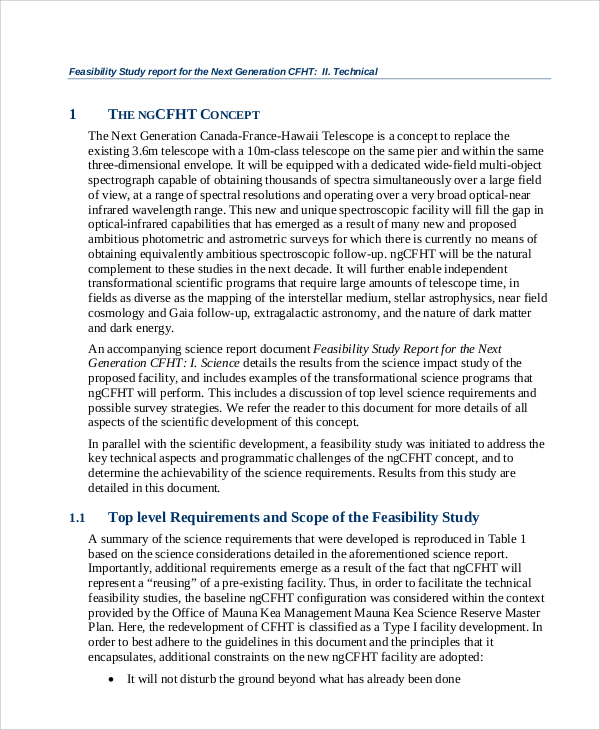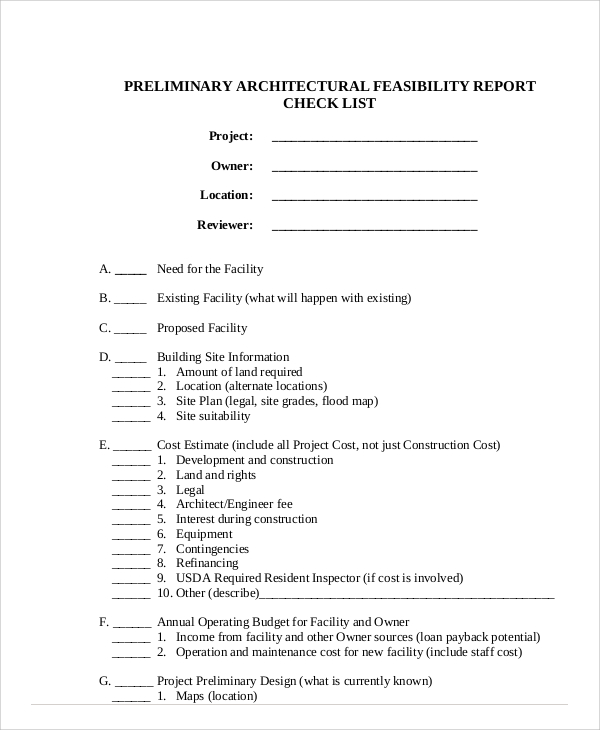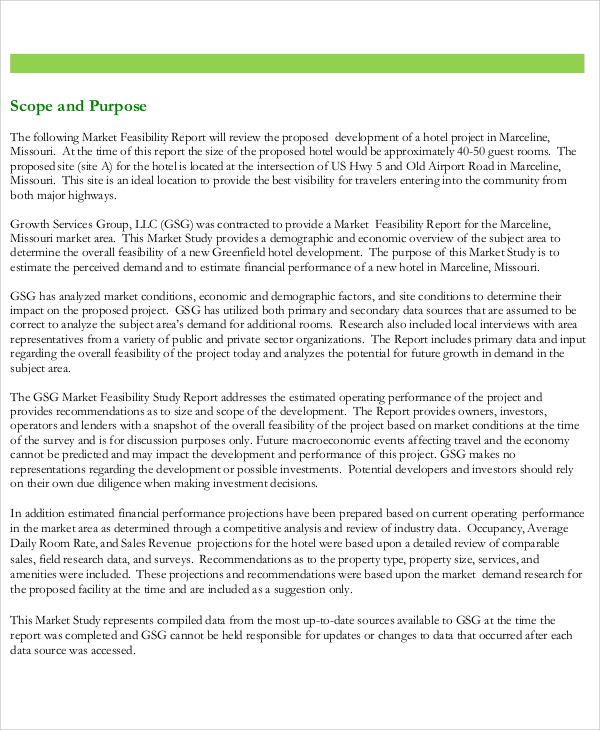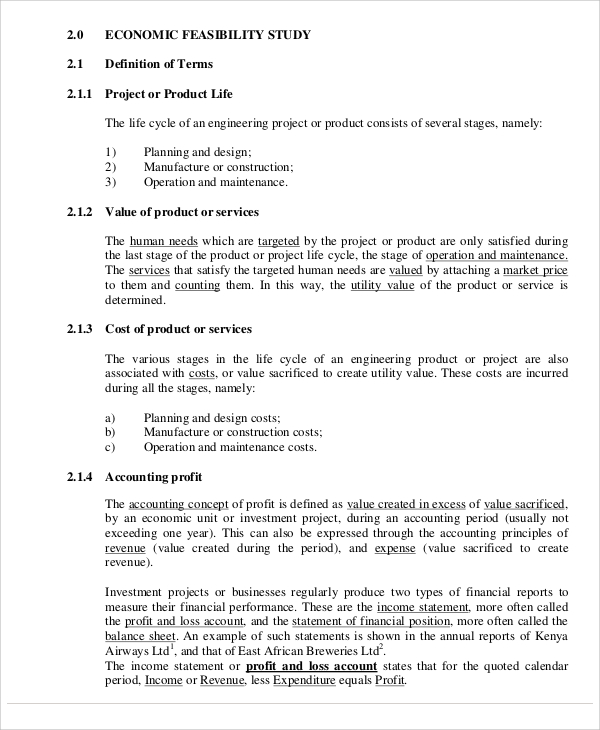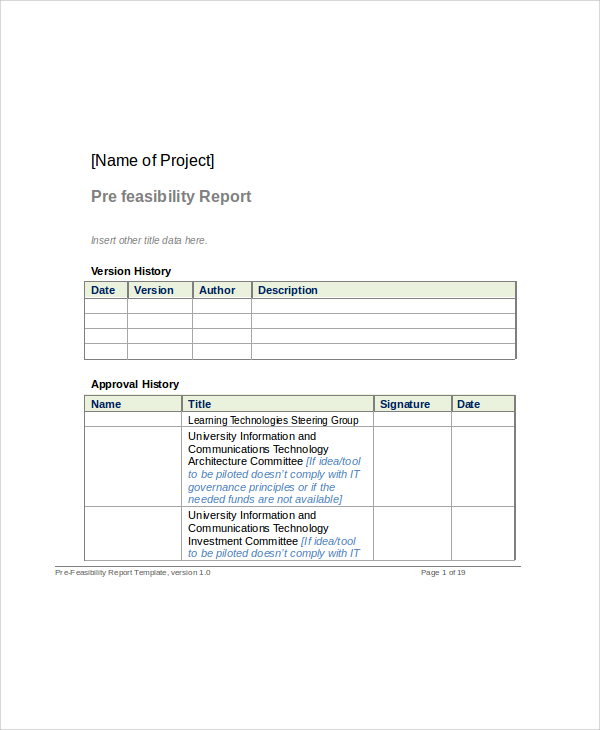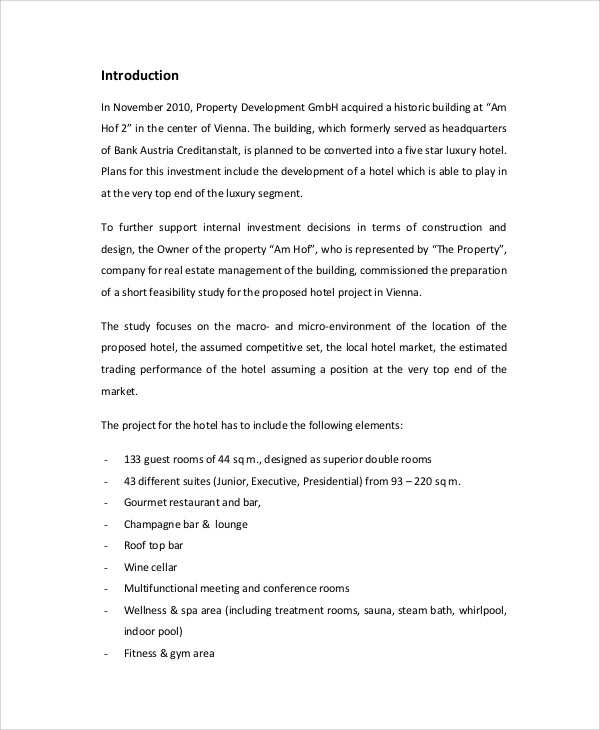You may have an idea for a project or business that you want to start. Blindly going with that idea and pushing through with it without the necessary reports to back it up might not have a positive effect. Especially when the project involves a large investment or when it is too complex, you would need to conduct a study of its viability and make a feasibility report.
A feasibility report would be needed to be done especially on projects that have risks associated with it. Doing one does not have to be a hard task as we have sample reports that you can use as a guide in making one of your own. All the necessary elements of a feasibility report are present in these samples.
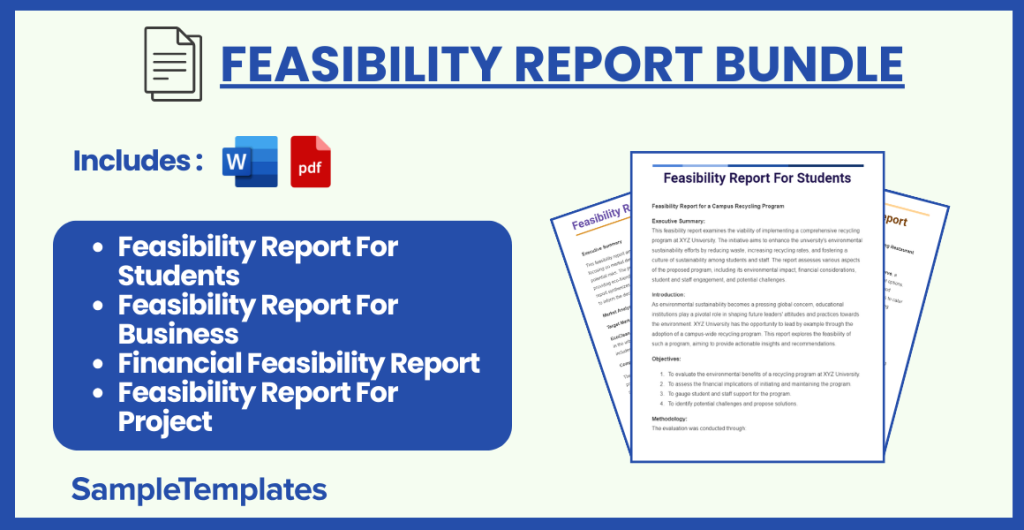
Download Feasibility Report Bundle
Feasibility Report For Students
Feasibility Report for a Campus Recycling Program
Executive Summary:
This feasibility report examines the viability of implementing a comprehensive recycling program at XYZ University. The initiative aims to enhance the university’s environmental sustainability efforts by reducing waste, increasing recycling rates, and fostering a culture of sustainability among students and staff. The report assesses various aspects of the proposed program, including its environmental impact, financial considerations, student and staff engagement, and potential challenges.
Introduction:
As environmental sustainability becomes a pressing global concern, educational institutions play a pivotal role in shaping future leaders’ attitudes and practices towards the environment. XYZ University has the opportunity to lead by example through the adoption of a campus-wide recycling program. This report explores the feasibility of such a program, aiming to provide actionable insights and recommendations.
Objectives:
- To evaluate the environmental benefits of a recycling program at XYZ University.
- To assess the financial implications of initiating and maintaining the program.
- To gauge student and staff support for the program.
- To identify potential challenges and propose solutions.
Methodology:
The evaluation was conducted through:
- Surveys and interviews with students, staff, and faculty to understand the current waste management practices and attitudes towards recycling.
- Consultations with recycling and waste management experts to gather insights on best practices and program implementation.
- Analysis of case studies from other universities with successful recycling programs.
- Financial analysis to estimate the startup and operational costs of the program.
Findings:
- Environmental Impact: A recycling program has the potential to significantly reduce the volume of waste sent to landfills, lower greenhouse gas emissions, and conserve natural resources. Based on similar institutions’ case studies, implementing recycling could divert up to 50% of campus waste from landfills.
- Financial Considerations: The initial cost of setting up recycling bins, signage, and educational materials is estimated at $20,000, with ongoing operational costs of $5,000 annually. Potential revenue from selling recyclable materials could offset some of these costs.
- Student and Staff Engagement: Surveys indicate strong support for a recycling program, with 85% of respondents expressing a willingness to participate actively. Staff and faculty have also shown interest in incorporating sustainability practices into their departments and curricula.
- Challenges: Identified challenges include the need for effective sorting of recyclables, potential contamination of recycling streams, and ensuring sustained participation by the university community.
Recommendations:
- Program Implementation: Begin with a pilot program in select campus areas to refine the collection process and gauge participation rates.
- Education and Awareness: Develop an ongoing campaign to educate the campus community about the importance of recycling and how to recycle correctly.
- Partnerships: Partner with local recycling facilities and environmental organizations to ensure the efficient processing of recyclable materials and to explore community engagement opportunities.
- Monitoring and Evaluation: Establish metrics for tracking the program’s progress, including waste diversion rates, program costs, and community participation levels.
Conclusion:
Implementing a recycling program at XYZ University is both feasible and beneficial. The program would not only contribute to environmental sustainability but also foster a culture of responsibility and engagement among students and staff. With careful planning, community involvement, and ongoing evaluation, XYZ University can become a model for campus sustainability efforts.
Approval Signature:
[Your Name]
[Position]
[Date]
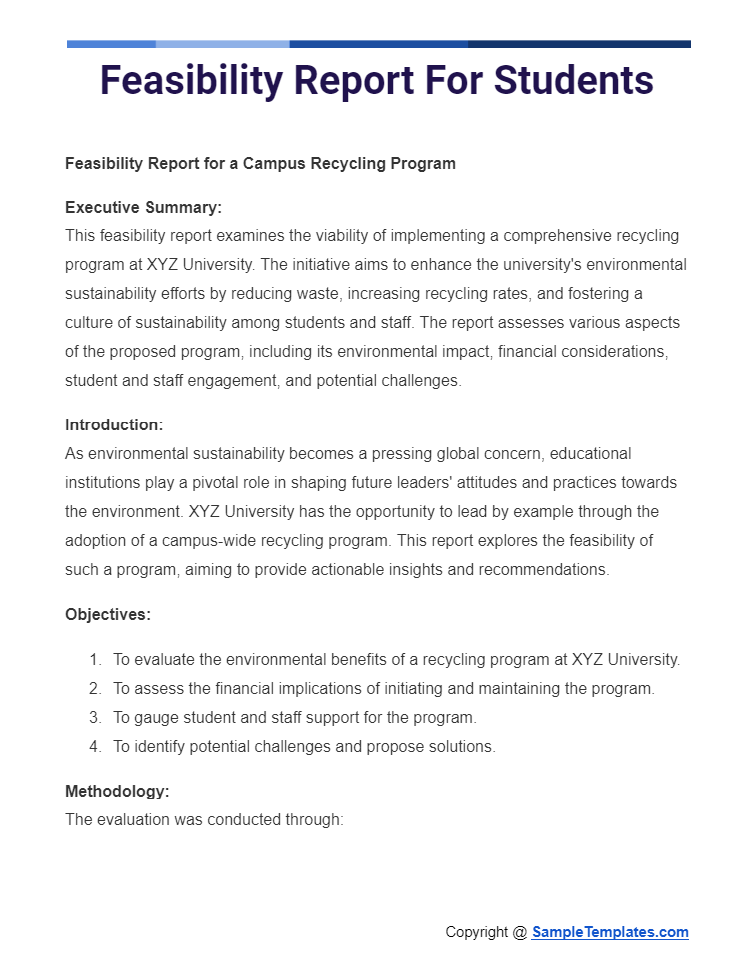
Feasibility Report For Business
Executive Summary
This feasibility report aims to evaluate the viability of launching a new business venture, focusing on market demand, financial prospects, operational requirements, and potential risks. The proposed business, EcoClean Solutions, is centered around providing eco-friendly cleaning services to both residential and commercial sectors. This report synthesizes research findings, financial projections, and strategic considerations to inform the decision-making process.
Market Analysis
Target Market
EcoClean Solutions targets environmentally conscious businesses and homeowners in the urban and suburban areas of the Pacific Northwest. The primary demographic includes middle to high-income households and businesses committed to sustainability.
Competition Analysis
The market hosts several traditional cleaning services, but few specialize in eco-friendly practices. EcoClean Solutions differentiates itself through its commitment to sustainability, using biodegradable cleaning products and low-impact cleaning methods.
Demand Assessment
Surveys and market research indicate a growing demand for green cleaning services. Approximately 60% of surveyed individuals expressed a willingness to pay a premium for environmentally safe cleaning options.
Financial Analysis
Startup Costs
- Initial Equipment and Supplies: $20,000
- Marketing and Advertising: $5,000
- Operational Licenses and Permits: $2,000
- Insurance: $3,000
- Total Startup Costs: $30,000
Revenue Projections
First-year revenue is projected at $150,000, with a 20% increase anticipated yearly based on market expansion and repeat clientele.
Break-Even Analysis
The business is expected to reach its break-even point within the first 18 months of operation.
Operational Plan
Business Model
EcoClean Solutions will operate a direct-to-consumer model, offering cleaning services booked through an online platform. The business will start with a team of 10 trained cleaning professionals.
Location and Logistics
Operations will be based in a central warehouse for storing cleaning supplies and equipment. Services will be offered within a 50-mile radius of the urban center.
Risk Analysis
Market Risks
- Competition: Established cleaning services may adopt eco-friendly practices, increasing competition.
- Market Saturation: High demand may lead to rapid market saturation.
Financial Risks
- Cost Overruns: Initial cost estimates for supplies and marketing may be exceeded.
- Revenue Shortfalls: Projected revenues may not be achieved if market demand is overestimated.
Conclusion and Recommendations
EcoClean Solutions presents a viable business opportunity with a strong market demand for eco-friendly cleaning services. Financial projections indicate a profitable venture with a robust growth potential. However, it is recommended to proceed with caution, keeping a close watch on operational costs and market dynamics. Implementing a phased approach to expansion can mitigate financial risks while capitalizing on market opportunities.
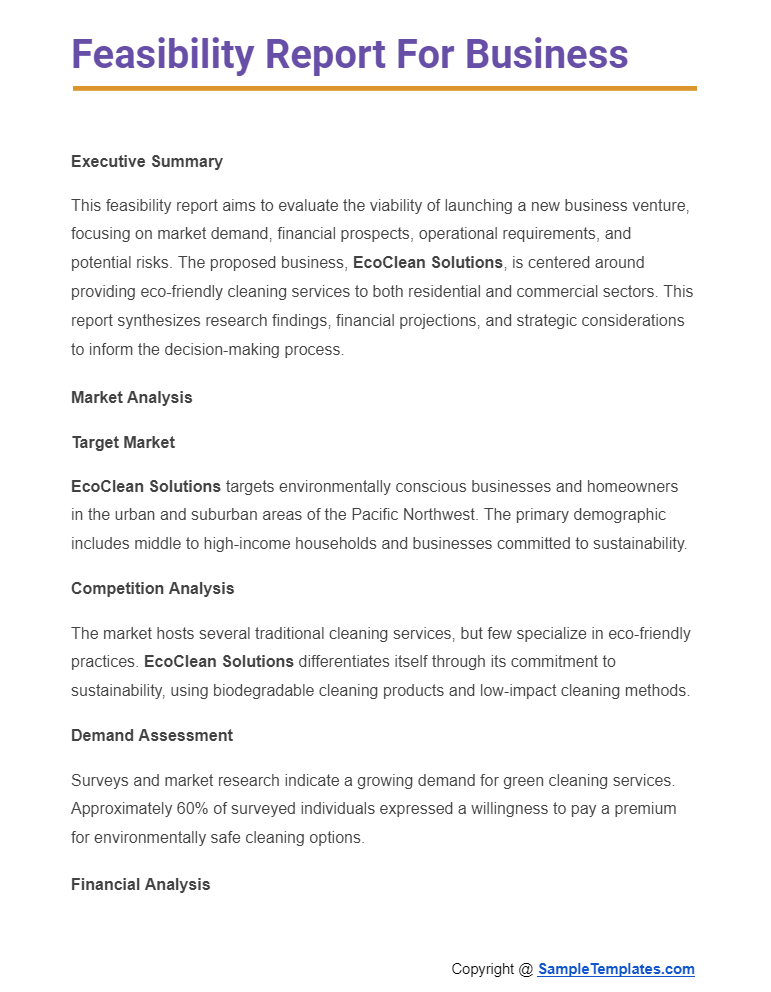
Financial Feasibility Report
Financial Feasibility Report for “QuickServe” – A Fast-Casual Dining Restaurant
Executive Summary
This financial feasibility report evaluates the viability of launching QuickServe, a fast-casual dining restaurant focusing on healthy, quick, and affordable meal options. The report analyzes startup costs, revenue projections, cash flow analysis, and profitability to assess the financial prospects of this venture. QuickServe aims to cater to the growing market of health-conscious consumers seeking convenient dining experiences.
Startup Costs
QuickServe‘s initial investment is categorized into fixed and variable costs. Key expenditures include:
- Lease and Renovation: $50,000 for securing a prime location and customizing the space.
- Equipment and Supplies: $30,000 for kitchen equipment, furniture, and initial inventory.
- Marketing and Branding: $10,000 for initial promotional activities to build brand awareness.
- Operating Capital: $20,000 to cover expenses during the initial months.
- Total Estimated Startup Costs: $110,000
Revenue Projections
Year 1
- Average Sales: $200,000, assuming steady customer growth and repeat business.
- Gross Margin: 60%, typical for the fast-casual dining sector.
Year 2
- Projected Growth: 25%, resulting from expanded marketing and word-of-mouth referrals.
- Estimated Sales: $250,000.
Year 3
- Sustained Growth: 20%, with potential expansion or franchising opportunities.
- Projected Sales: $300,000.
Expense Forecast
- Fixed Expenses: Including rent, utilities, and salaries, estimated at $100,000 annually.
- Variable Expenses: Primarily food supplies and packaging, estimated at 40% of sales.
Profitability Analysis
- Break-Even Point: Expected within the first 18 to 24 months.
- Net Profit Year 1: After covering initial expenses, projected at 10% of sales.
- Increasing Profits: Expected to rise as the brand becomes established and operational efficiencies improve.
Cash Flow Analysis
Cash flow projections indicate positive cash flow by the end of the first year, with significant improvements as revenue increases and initial investments pay off.
Sensitivity Analysis
- Best Case Scenario: Increased demand allows for higher pricing and a quicker break-even point.
- Worst Case Scenario: Slower customer acquisition and higher operational costs delay profitability.
Risk Management
Key risks include market saturation, fluctuating food prices, and potential economic downturns. Strategies to mitigate these risks include flexible pricing, diversified supplier agreements, and an emergency fund.
Conclusion
The financial feasibility of QuickServe is promising, with solid revenue projections and a clear path to profitability. The concept aligns with current market trends towards healthier, fast dining options. However, careful management of startup costs, operational efficiency, and market positioning will be crucial to the venture’s success. With a strong business model and strategic planning, QuickServe is positioned to become a profitable addition to the fast-casual dining landscape.
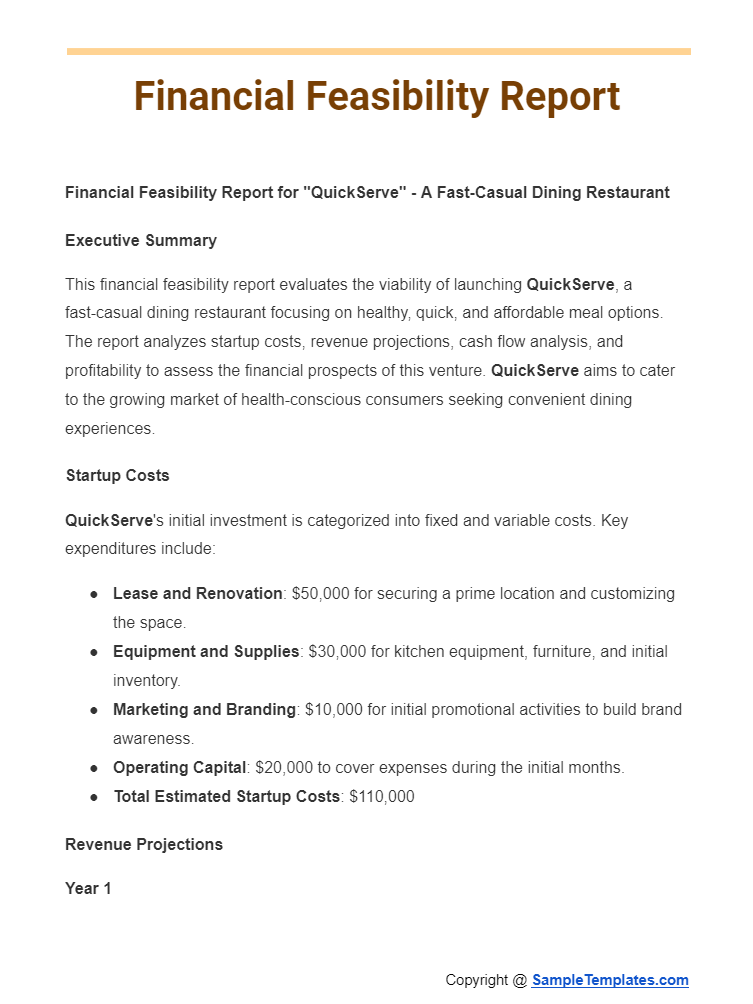
Feasibility Report For Project
Feasibility Report for GreenTech Solar Farm Project
Executive Summary
This feasibility report evaluates the viability of the GreenTech Solar Farm Project, an initiative aimed at generating renewable energy through solar power. The project intends to establish a solar farm on a 100-acre plot in the Southwest region, where sunlight is abundant year-round. This report covers key aspects such as market demand, financial viability, technical requirements, and environmental impact.
Market Analysis
Target Market
The primary market includes residential areas and businesses seeking to reduce their carbon footprint and energy costs. The region’s increasing demand for renewable energy solutions presents a favorable market opportunity.
Competition Analysis
Current competitors are mainly traditional energy providers and a few renewable energy farms. GreenTech’s competitive edge lies in its advanced solar technology and commitment to sustainability, offering more efficient energy solutions at competitive rates.
Technical Analysis
Site Selection
The chosen location offers optimal sunlight exposure, minimal land use conflicts, and accessibility for maintenance and energy distribution.
Technology
The project will utilize high-efficiency photovoltaic (PV) panels, capable of generating 50 MW of power annually. The technology selected ensures maximum energy conversion and durability in harsh weather conditions.
Infrastructure Requirements
- PV Panels Installation: Covering 80 acres.
- Energy Storage Systems: For energy storage and supply during low sunlight.
- Transmission Infrastructure: Connecting the solar farm to the local grid.
Financial Analysis
Startup Costs
- Land Acquisition: $2,000,000
- PV Panels and Installation: $25,000,000
- Energy Storage Systems: $5,000,000
- Infrastructure and Miscellaneous: $3,000,000
- Total Startup Costs: $35,000,000
Revenue Projections
- Year 1: $4,000,000, scaling up as more sectors get onboarded.
- Year 5: $20,000,000, with increased capacity and higher market penetration.
Break-Even Analysis
The project is expected to reach its break-even point within 7 years, considering initial investments, operational costs, and projected revenue.
Environmental Impact Assessment
The project promotes environmental sustainability by reducing greenhouse gas emissions and reliance on fossil fuels. A comprehensive assessment confirms minimal adverse effects on local wildlife and ecosystems.
Risk Analysis
- Regulatory Risks: Changes in renewable energy policies could affect profitability.
- Technical Risks: Potential delays in technology delivery and setup.
- Market Risks: Fluctuations in energy market prices may impact revenue.
Conclusion and Recommendations
The GreenTech Solar Farm Project is deemed feasible with significant potential for success. It aligns with global trends towards renewable energy, offering environmental and economic benefits. However, meticulous planning and risk management are crucial to navigate potential challenges. It is recommended to proceed with further detailed planning phases, securing funding, and engaging with stakeholders to ensure the project’s successful implementation.
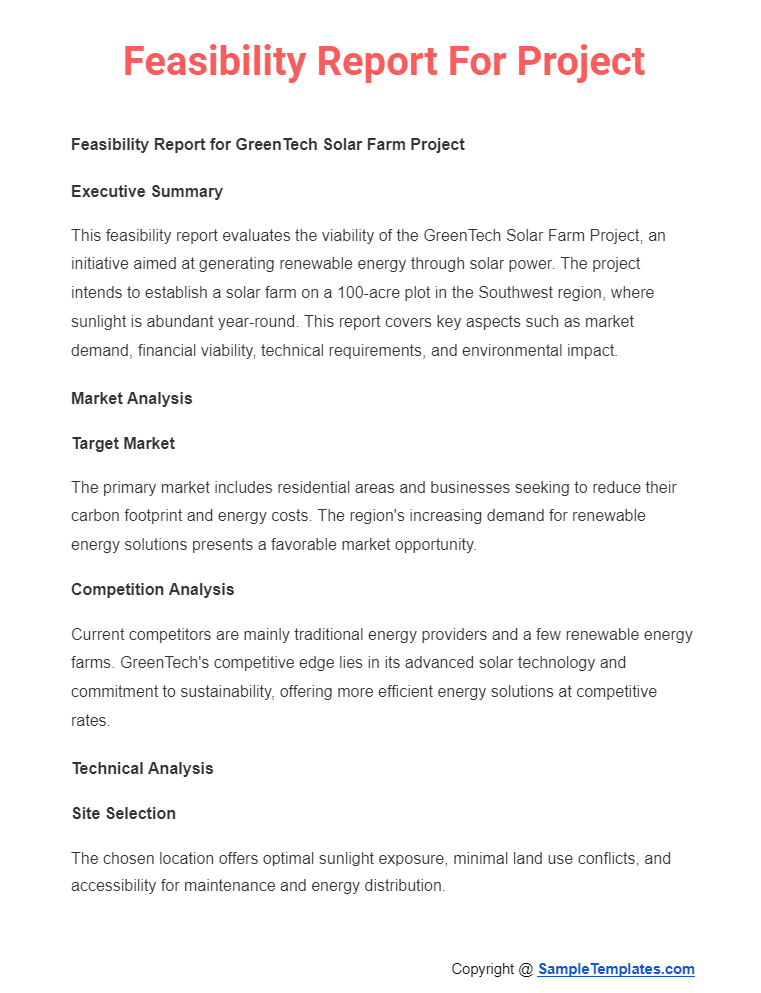
Browse More Templates On Feasibility Reports
Feasibility Report Sample PDF
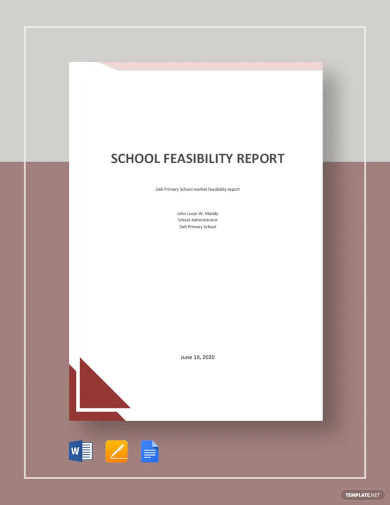
Feasibility Study Template Word
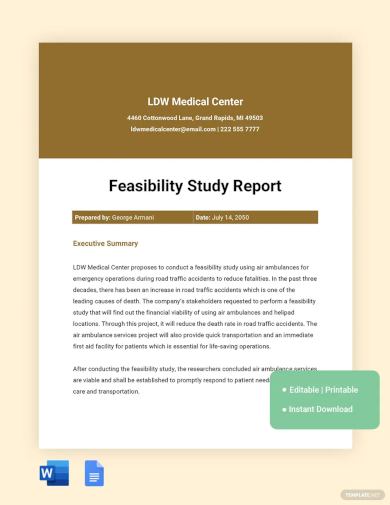
Feasibility Report Template

Feasibility Report Example
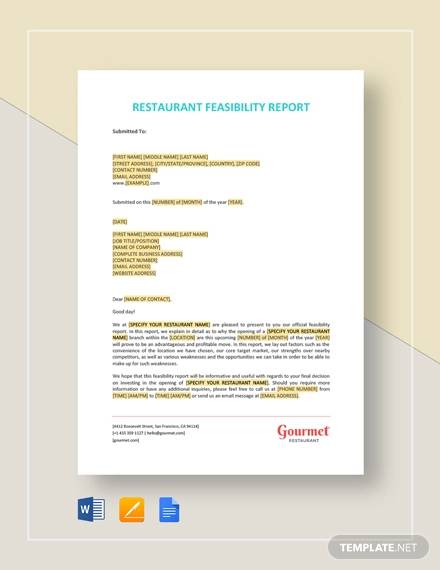
Feasibility Report Format
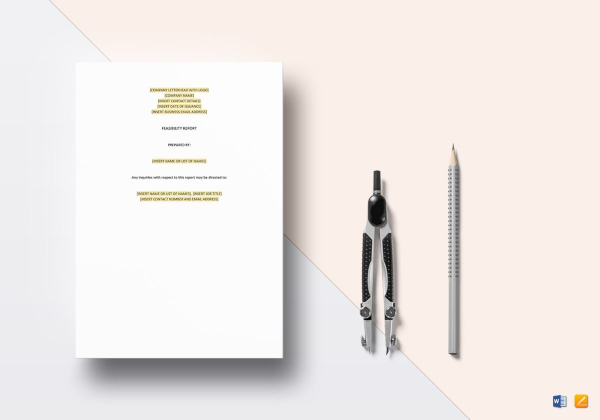
Project Feasibility Report Sample PDF
Feasibility Report Template Free Download
What are the Advantages and Disadvantages of Feasibility Report?
| Advantages of Feasibility Report | Disadvantages of Feasibility Report |
|---|---|
| 1. Guides Decision-Making Process | 1. Time-Consuming to Compile and Analyze Data |
| 2. Identifies Potential Project Risks | 2. Costly, Especially for Comprehensive Projects |
| 3. Offers Insight into Project Viability | 3. Uncertainties in Predicting Future Conditions |
| 4. Helps Secure Funding and Support | 4. Reliance on Assumptions and Estimates |
| 5. Enhances Project Planning and Control | 5. Possible Bias in Data Interpretation |
| 6. Facilitates Communication with Stakeholders | 6. May Overlook Unforeseen External Factors |
Business Feasibility Report Sample
Parts of a Feasibility Report
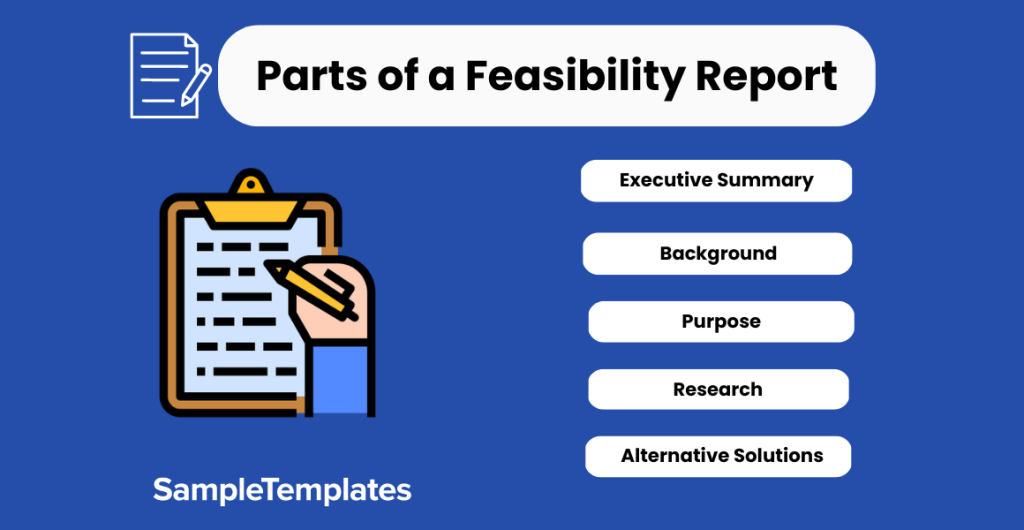
A feasibility report needs to be comprehensive and should cover all the necessary aspects related to the implementation of the idea. Here are the parts you need to see in an effective feasibility report. The action reports templates that are on the internet can be of great use to you.
1. Executive Summary
Provide a summary of the study done. Explain what the project is all about, provide solutions and alternative courses of action, and then your recommendation. Take a look at the professional business report writing available online.
2. Background
Explain the problem and why you did an investigation. You can also take a look at the weekly report templates that are available online for more.
3. Purpose
Why are you doing a feasibility study?
4. Research
This serves as the body of your report and where you write in detail your processes, methodologies, etc. You may also see technical reports.
5. Alternative Solutions
You will need to post at least three solutions to the problem and examine the viability of these solutions.
6. Recommendation
Recommend which of the three solutions is the most viable option.
7. Conclusion
Briefly write a conclusion to the report.
Sample Feasibility Report
Feasible Report Example
Types of Feasibility
A feasibility study needs to examine all aspects regarding the implementation of a proposed idea. By doing one, you are saved from the cost of pushing through a project that ends up failing. There are many types of feasibility studies and they are outlined below. You may also see product analysis reports.
1. Technical Feasibility
This is an examination of the company’s resources. This examines whether the current company equipment and resources are enough in undertaking the new project or if they have to upgrade what they currently have. You may also see background check reports.
2. Schedule Feasibility
The project may require to stick to a timeline in order to succeed and so companies need to check their own timetable if they can undertake a new project. You may also see science project reports.
3. Economic Feasibility
Examine the cost/benefit analysis. Compare Sample Expense Reports to revenues you’ll earn in the long term.
4. Marketing Feasibility
Consider your target market and whether your product appeals to a certain demographic.
5. Other Feasibility Studies
There are other aspects that determine whether a proposal is viable or not including legal, cultural, ethical feasibility, and so on. The executive reports can help you make excliusive exectuive reports you need of any kind.
Feasibility studies need to be done when venturing into new endeavors. Making feasibility reports doesn’t have to be a tedious task as you can download these sample reports and use them as your guide. You never know, that idea of yours may probably be an idea that will change your life.
How to Write Feasibility Report
Sample Architecture Feasibility Report
Market Feasibility Report Template
What are the Components of a Feasibility Report?
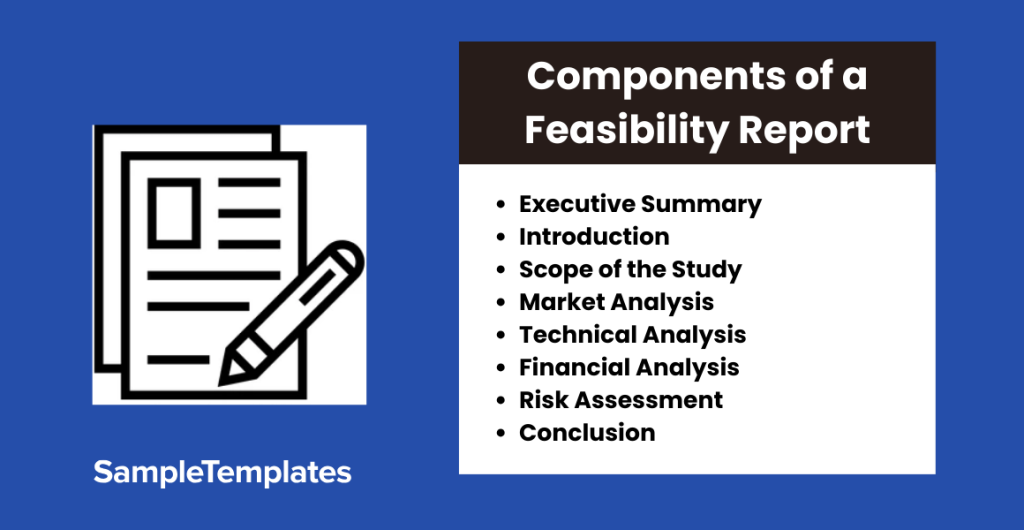
- Executive Summary: Provides a brief overview of the report’s key findings.
- Introduction: Introduces the project and its objectives.
- Scope of the Study: Defines the boundaries and limitations of the analysis.
- Market Analysis: Examines the target market and its potential.
- Technical Analysis: Assesses the technical requirements and feasibility.
- Financial Analysis: Examines the project’s economic viability.
- Risk Assessment: Identifies potential risks and mitigation strategies.
- Conclusion: Summarizes the overall feasibility and recommends a course of action.
Economic Feasibility Report Example
Pre-Feasibility Report Template
Short Feasibility Report Sample PDF
General FAQ’s
What Is a Feasibility Report?
A feasibility report is a documentary examining a proposed idea and whether it will be a viable endeavor. It examines all aspects related to the idea and its implementation. All the data including the expense reports, investment, etc., need to be factual and unbiased information. You can check our expense report samples and incident report samples for a guide on how to make them.
Define a Feasibility Report?
A feasibility report format can be defined as a document that evaluates potential solutions to business issues, problems, and opportunities. It helps determine which of these is viable for further analysis, to make sure that if ever these issues are to occur again, there is an effective solution to eradicate that problem.
What is the importance of a Feasibility Report?
A feasibility report lets you understand how a proposal can work on a long-term basis and support financial risks that may occur during the project. It recognizes what are the potential cash flows an organization has. It helps planners focus on the project and narrows down all the possibilities with ease.
What is included in a Feasibility Report?
A feasibility report outline helps examine a solution and evaluates if it is possible to overcome certain constraints. It includes the following in it:
- A lesson summary
- Introduction
- Background information
- Requirements for the solution
- Evaluations
- Conclusions, so that people know what needs to be done
- And finally, the recommendation and final opinions sections.
Why should a Feasibility Report be used?
A feasibility report is written to see if a new business model or a revenue stream makes sense for your business so that it can be run successfully. In business, a feasibility study is an evaluation of the practicality of a proposed business direction.
How do you write a Feasibility Report?
You can write a feasibility report with the help of the following steps:
- Write the project description
- Collect all the background information you can for the project
- Describe all possible problems and their solutions
- List the evaluation criteria
- Propose the most proper solutions to issues
- Write the perfect conclusion.
In conclusion, feasibility reports are invaluable tools for assessing the viability of a project or business venture. By providing thorough analysis and recommendations, they empower decision-makers to make informed choices that maximize the chances of success and mitigate potential risks.
Related Posts
Sample Chemistry Lab Reports
School Accomplishment Report Samples & Templates
Field Report Samples & Templates
Sample Science Project Reports
Business Report Samples & Templates
Survey Reports Samples & Templates
Psychological Assessment Report Samples [ Clinical, Child, Intake ]
Report Format Samples & Templates
Acknowledgement for Internship Report Samples [ Hotel, Hospital, Teaching ]
Field Trip Report Samples [ Agriculture, Educational, Environmental ]
Student Counseling Report Samples
Narrative Accomplishment Report Samples [ Science, Teacher, Reading ]
Sample Acknowledgment Report Templates
Internship Narrative Report Samples
Interview Summary Report Samples

